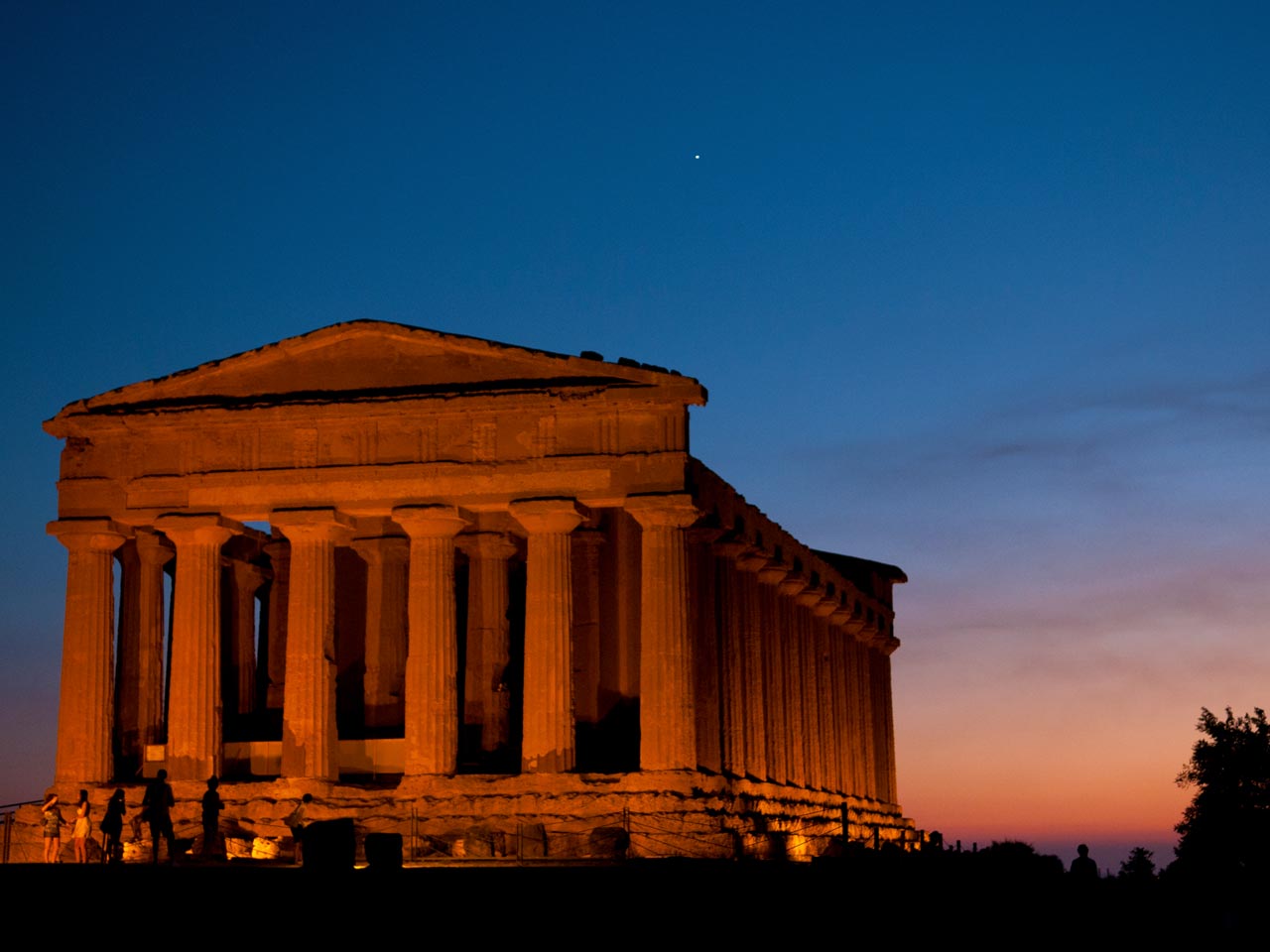Valley of the Temples

In the Valley of the Temples, built in 581 BC by the inhabitants of Gela (who in turn were originally from the islands of Rhodes and Crete) and declared by Unesco, in 1997, “world heritage of humanity“, among centenary olive trees and almond trees, there is one of the largest archaeological finds in the Mediterranean. The park, about 1300 hectares wide, preserves the remains of the ancient city of Akragas and the surrounding area, all the way to the sea. Akragas was one of the most important Greek colonies in Sicily.
The colony in the last decades of the sixth century BC was surrounded by a mighty wall 12 km long and equipped with 9 gates, reaching fame and power under the tyrant Terone, but especially during the years of democracy established by the Akragantine philosopher Empedocles. In 406 BC Akragas was destroyed. During the Punic wars it was the base of the Carthaginians war against the Romans who, in 210 BC, conquered it and changed its name to Agrigentum. The Valley of the Temples in Agrigento is an impressive testimony of Magna Graecia in Sicily. It is situated along a ridge, improperly called “Valley” and in the southernmost area, numerous temples were erected to witness the prosperity of the city. Burned by the Carthaginians in 406 BC, they were restored by the Romans (1st century BC) who respected the original Doric style.
Their collapse was determined by earthquakes or by the destructive fury of Christians endorsed by an edict of the Eastern Emperor Theodosius (4th century). All the buildings are oriented to the east to respect the classical criterion (Greek and Roman) which envisaged that the entrance to the cell housing the statue of the divinity was illuminated by the rising sun, the source and principle of life.



